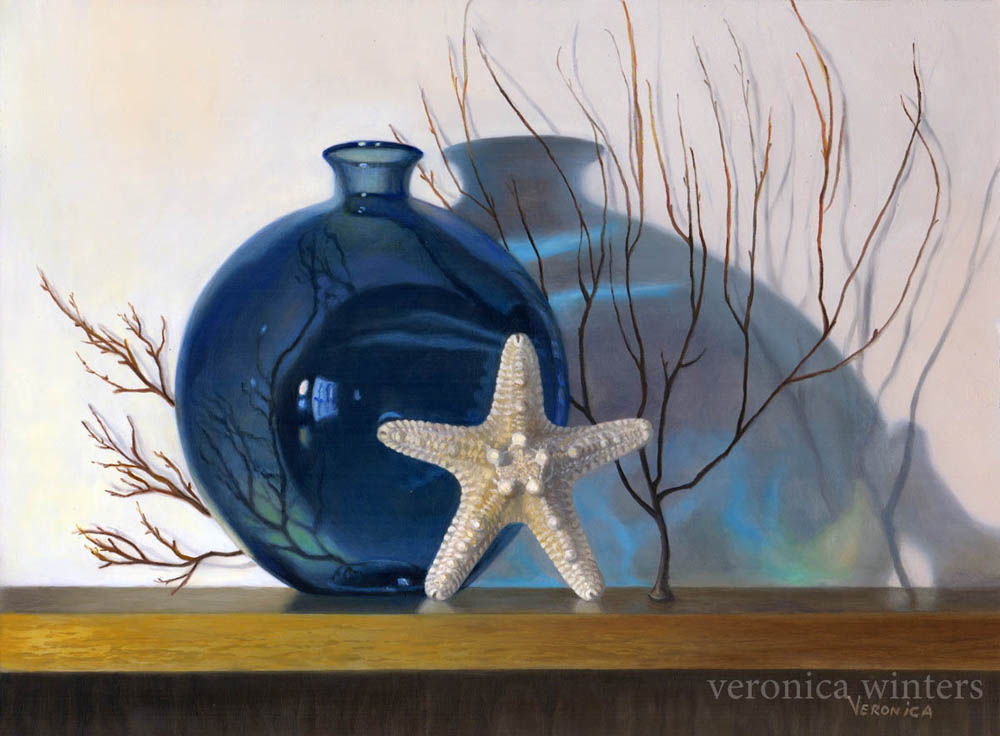One-of-a-Kind Wall Art Solutions: Oil Paintings for Sale
Checking out Everything About Oil Paints: A Guide to Understanding Their Charm and Worth
Oil paints have astounded target markets for centuries, offering a peek right into the artistic mastery of numerous ages. Their rich history is linked with ingenious techniques and extensive psychological expression. Understanding the products and methods behind these artworks can boost appreciation. Additionally, the marketplace for oil paints offers chances for capitalists and collection agencies alike. As one explores this interesting world, the concern arises: what makes an oil paint genuinely beneficial?
The History of Oil Painting: A Journey With Time
Although oil paint has origins that go back to ancient times, it really prospered throughout the Renaissance, when artists uncovered its flexibility and abundant shade capacity. Early examples can be mapped to the 7th century, with techniques progressing especially across societies. The medium came to be prominent in Northern Europe in the 15th century, especially with the jobs of musicians like Jan van Eyck, who pioneered its usage for comprehensive realism and dynamic tones. This duration noted a departure from tempera paints, permitting for higher deepness and texture. As oil paint spread, it affected plenty of artists, causing masterpieces by renowned figures such as Leonardo da Vinci and Rembrandt. The medium's heritage continues, shaping the art globe well into contemporary times.
Comprehending Oil Repaints: Products and Techniques
As artists check out the globe of oil paints, they experience a diverse range of products and strategies that specify this medium. The primary elements of oil paint include pigments, which supply color, and drying oils, such as linseed, that bind the pigments and help with application. Different additives can customize the paint's texture and drying time, improving adaptability. Strategies like glazing, where transparent layers are accumulated, and impasto, which includes applying thick paint, enable various visual impacts. In addition, making use of brushes, scheme blades, and even fingers can produce special textures and finishes. Recognizing these materials and strategies enables artists to fully share their creativity and achieve the wanted influence in their art work.
The Function of Color in Oil Paintings
Color plays a critical role in oil paints, influencing both aesthetic charm and emotional vibration. Comprehending shade theory basics, consisting of the partnerships between hues, can boost an artist's capacity to share mood and ambience. Furthermore, mastering shade blending techniques permits for higher deepness and richness in a paint's combination.

Color Theory Essential
Understanding shade concept is necessary for artists collaborating with oil paints, as it develops the foundation for developing harmonious and visually appealing compositions. Shade theory encompasses the research study of how shades engage, the color wheel, and the connections in between main, additional, and tertiary colors. Artists make use of corresponding colors to enhance contrasts and develop prime focus, while analogous shades advertise unity and cohesiveness within a piece. Additionally, the principles of cozy and great shades influence the perception of deepness and space in a paint. Realizing these principles enables musicians to control shade properly, assisting the viewer's eye and connecting their designated message. Mastery of shade theory inevitably improves a musician's ability to communicate emotions and concepts via their job.
Emotional Effect of Shade
The emotional influence of color in oil paintings plays a vital function in just how audiences attach and perceive with artwork. Shades evoke certain feelings and moods, influencing the customer's psychological state. For example, warm colors like oranges and reds can develop a sense of heat and energy, while trendy tones such as blues and greens usually stimulate calmness or self-questioning. Artists purposefully select color combinations to improve narrative aspects, guiding the audience's emotional trip. The saturation and comparison of shades better intensify these results, attracting interest and producing emphasis. Ultimately, the interplay of colors in oil paintings not just boosts their visual appeal but also acts as an effective tool for psychological expression, improving the viewer's experience and interpretation.
Shade Mixing Techniques
While numerous aspects of oil paint add to the total structure, grasping color blending methods is essential for achieving wanted impacts and depth. Shade blending can be approached via numerous approaches, consisting of the subtractive and additive procedures. Additive mixing includes integrating colors of light, while subtractive blending counts on pigments, where shades blend to create brand-new shades. Musicians frequently utilize a minimal combination to create unified works, understanding the partnerships between key, additional, and tertiary colors. Strategies such as glazing and scumbling better improve depth and brightness. By skillfully blending shades, an artist can stimulate emotions, develop prime focus, and attain a sense of realistic look, eventually boosting the paint's visual and emotional effect.
Famous Oil Painters and Their Iconic Works

Famous for their mastery of shade and technique, oil painters have actually developed some of the most well known art work in background. Popular artists like Vincent van Gogh astounded target markets with his emotive brushwork in "Starry Night," while Claude Monet's "Perception, Sunup" laid the groundwork for Impressionism. Leonardo da Vinci's "Mona Lisa" stays a long-lasting icon of artistic wizard, showcasing his ability in capturing human expression. On the other hand, Rembrandt's "The Evening Watch" highlights his innovative use light and darkness. Various other significant numbers consist of Pablo Picasso, who revolutionized contemporary art with his vibrant experimentation in works like "Les Demoiselles d'Avignon," and Georgia O'Keeffe, whose dynamic depictions of landscapes and blossoms aided specify American modernism. Each musician's one-of-a-kind style contributed substantially to the oil paint landscape.
Just how to Review the Top Quality of an Oil Paint
Evaluating the top quality of an oil paint includes a careful analysis of workmanship techniques, as well as an analysis of color and make-up. Observing brushwork, layering, and the application of paint can expose the artist's ability level. In addition, the interaction of colors and the total plan of elements add significantly to the paint's aesthetic worth.
Evaluating Workmanship Techniques
A thorough evaluation of craftsmanship strategies is necessary for figuring out the quality of an oil paint. Critics ought to first take a look at the application of paint; thick, distinctive brushstrokes might recommend a skilled hand, while extremely uniform applications might indicate an absence of depth. oil paintings for sale. The layering technique is likewise vital; the existence of lusters and varied density can enhance brightness and intricacy. Additionally, the top quality of the materials utilized, such as the canvas and pigments, plays a significant function in resilience and general visual. Focus to detail in aspects like edges and shifts in between shades reflects the artist's dedication to their craft. Ultimately, these methods add to the paint's psychological influence and market price, acting as indications of the musician's skill and intent
Evaluating Color and Structure
While evaluating the high quality of an oil painting, one need to concentrate on the interplay of shade and composition, as these aspects are basic to the artwork's total impact. Color selections can evoke emotions and develop state of mind; for that reason, the musician's combination must be analyzed for consistency and comparison. A well-balanced structure routes the viewer's eye and produces a feeling of unity. Musicians frequently utilize strategies like the rule of thirds or leading lines to improve aesthetic passion. Additionally, using light and darkness can include depth, enhancing the three-dimensionality of the painting. Inevitably, a successful oil painting marries shade and make-up, involving the customer and inviting a deeper appreciation of the musician's vision and strategy.
Taking care of and Preserving Oil Paintings
Appropriate treatment and preservation of oil paintings is important for preserving their honesty and durability. To protect these artworks, it is vital to display them away from straight sunshine, which can trigger fading and discoloration. Keeping a stable setting with regulated temperature and moisture more aids in stopping damage. Cleaning need to be done carefully using a soft, completely dry fabric, avoiding any kind of extreme chemicals that might damage the paint or varnish. Routine evaluations for indications of wear and tear, such as cracking or flaking, are advisable. When keeping or transporting oil paints, correct cushioning and framing are necessary to stay clear of physical harm. Eventually, thorough care adds to the aesthetic charm and value of oil paintings over time.
The Market for Oil Paintings: Spending and collecting
Comprehending the marketplace dynamics for oil paints is important for capitalists and collectors alike. The value of these artworks is affected by various aspects, consisting of the artist's online reputation, historical relevance, and existing trends. Collection agencies usually seek pieces that resonate directly while considering prospective appreciation in value. Auctions and galleries offer as primary venues for trading, with prices changing based upon need and rarity. Purchasing oil paints calls for study right into the marketplace, as well as an understanding of authenticity and provenance. Additionally, emerging artists may use possibilities for significant returns, while established names can command high prices. On the whole, a tactical strategy to collecting can produce both visual satisfaction and financial rewards.

Often Asked Questions
What Are the Ecological Impacts of Oil Paint Materials?
The environmental influences of oil painting products include the launch of unstable natural substances (VOCs), unsafe waste generation, and resource removal for here pigments. These aspects add to contamination and ecological deterioration, raising worries amongst ecologically aware artists and customers.
How Do Different Canvases Impact Oil Painting Outcomes?
Various canvases affect oil paint results substantially. Absorbency, surface, and texture quality can alter paint application, drying out times, and shade vibrancy. Musicians frequently pick specific canvases to accomplish preferred results and enhance their creative expression.
Can Oil Paintings Be Brought Back if Harmed?
Oil paintings can certainly be recovered if damaged. Expert conservators make use of different methods to fix rips, tidy surfaces, and address discoloration, ensuring that the artwork preserves its original appeal and worth for future generations.
What Are the Indications of an Original Oil Paint?
The indications of an original oil paint include noticeable brush strokes, structure variations, and an irregular canvas weave (oil paintings for sale). Furthermore, authenticity might be verified through provenance, trademarks, and the existence of a varnish layer distinct to oil mediums
Exactly How Has Innovation Influenced Modern Oil Paint Techniques?
Innovation has actually substantially influenced modern-day oil painting strategies by presenting digital devices for planning, boosted materials for structure and long life, and on the internet platforms for sharing and selling art, thereby broadening musicians' innovative opportunities and audience get to. Oil painting has origins that date back to ancient times, it genuinely flourished during the Renaissance, when musicians discovered its adaptability and abundant color capacity. The psychological impact of color in oil paints plays a critical role in exactly how viewers attach and perceive with artwork. While several aspects of oil painting add to the total composition, grasping shade blending techniques is necessary for achieving wanted effects and depth. Reviewing the quality of an oil paint entails a careful assessment of craftsmanship strategies, as well as an evaluation of color and composition. While examining the top quality of an oil paint, one should concentrate on the interplay of color and structure, as these aspects are basic to the artwork's overall effect.